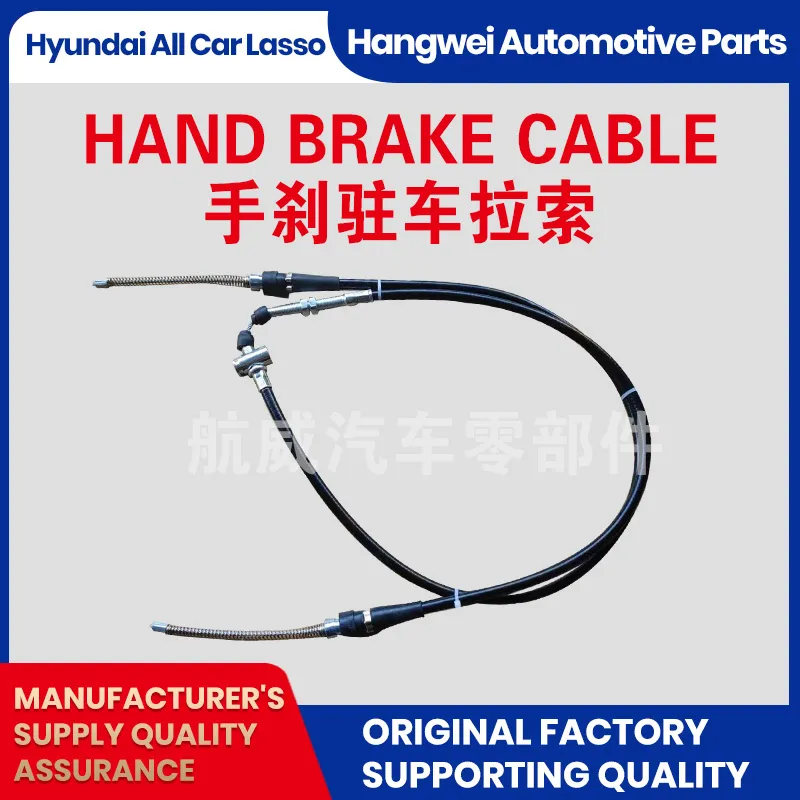Understanding the Importance of Clutch Fluid Hose in Vehicle Maintenance
Understanding Clutch Fluid Hose Its Importance and Maintenance
The clutch fluid hose plays a pivotal role in the functioning of a vehicle's manual transmission system. This component is crucial for the proper engagement and disengagement of the clutch, enabling smooth gear shifting. To understand its significance better, it is essential to delve into its functions, construction, potential issues, and maintenance.
Function of the Clutch Fluid Hose
At its core, the clutch fluid hose transfers hydraulic fluid from the master cylinder to the slave cylinder in the clutch system. This fluid acts as a medium to transmit force. When the driver presses the clutch pedal, the master cylinder generates hydraulic pressure, which is transmitted through the hose to the slave cylinder. This action disengages the clutch, allowing the driver to shift gears effortlessly. The effectiveness of this system relies heavily on the integrity and condition of the clutch fluid hose.
Construction and Material
Clutch fluid hoses are typically made from durable rubber or synthetic materials that can withstand high pressure and temperature fluctuations. The inner lining is designed to be resistant to the corrosive nature of hydraulic fluid. Additionally, many hoses are braided with steel to enhance their strength and durability, preventing them from bursting under pressure. The construction ensures that the hose maintains its integrity over time, even in challenging operating conditions.
Common Issues
Like any other automotive component, clutch fluid hoses can encounter problems that may compromise their functionality. The most common issue is wear and tear due to age, exposure to heat, and pressure cycling. Over time, the hose may develop leaks, which can lead to a drop in hydraulic fluid levels. A visible sign of a failing hose is puddles of fluid underneath the vehicle or a soft clutch pedal that doesn’t return to its original position quickly. In severe cases, a burst hose can lead to complete clutch failure, causing significant issues while driving.
clutch fluid hose

Maintenance Tips
Regular maintenance of the clutch fluid hose can prevent many problems and extend its lifespan. Here are some tips for keeping this crucial component in good condition
1. Regular Inspections Check the hose for any signs of wear, such as cracks, bulges, or leaks. Regular inspections can help identify problems before they escalate.
2. Fluid Level Checks Regularly check the hydraulic fluid level in the master cylinder reservoir. Low levels may indicate a leak in the system, including the hose.
3. Replacement Schedule Many manufacturers recommend replacing the clutch fluid hose every five to seven years, depending on usage and environmental conditions. Adhering to this schedule will help prevent unexpected failures.
4. Professional Help If you notice any irregularities in how the clutch operates, or if you can identify problems during your inspections, it is advisable to consult a professional mechanic. They can assess the situation accurately and take necessary actions.
Conclusion
In summary, the clutch fluid hose is an integral component of a vehicle's manual transmission system. Its role in the engagement and disengagement of the clutch is critical for smooth driving. Regular maintenance, timely inspections, and adhering to replacement schedules can help ensure its proper functioning. By taking these steps, vehicle owners can enjoy a reliable and efficient driving experience for years to come, making the clutch fluid hose a small but vital piece of automotive engineering.
-
Workings of Clutch Pipe and Hose SystemsNewsJun.04,2025
-
The Inner Workings of Hand Brake Cable SystemsNewsJun.04,2025
-
The Secrets of Throttle and Accelerator CablesNewsJun.04,2025
-
The Hidden Lifeline of Your Transmission Gear Shift CablesNewsJun.04,2025
-
Demystifying Gear Cables and Shift LinkagesNewsJun.04,2025
-
Decoding Clutch Line Systems A Comprehensive GuideNewsJun.04,2025
